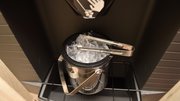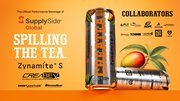Blog
I Can Do That But Should You?
October 21, 2015 by Tim Sanford
TAGS: Vending Times editorial, vending industry, vending editorial, retail automation, vending operator, vending industry history, coin machine, micro markets, coffee service, food service, Tim Sanford, amusement machine operator |
A question that continually arises in this (and many other) industries is whether a new kind of enterprise is compatible with vending, coffee service, contract foodservice or music and amusements. These debates always are interesting because there is no one right answer
And they have been going on for a long time. New developments almost always seem like a fine expansion opportunity to some, but as a diversion of resources and effort by others. Those others usually say something like, "That's very interesting -- but it's not the business we're in." As often as not, they're right; but the question "Why am I not in this business?" keeps on recurring.
In the immediate postwar years, as neighborhood taverns reached a peak of popularity that they have never since regained, the new 45-RPM jukeboxes found enthusiastic acceptance. The few prewar jukebox operating companies, and many start-ups formed by recently discharged service personnel revelling in their return to civilian life, expanded rapidly. At the same time, new high-capacity cigarette machines were in great demand, and the tobacco wholesalers who had done vending as a sideline -- as well as other eager veterans -- also enjoyed sustained growth.
An operator running a jukebox (or a cigarette machine) in a tavern was likely to be asked about adding a cigarette machine (or a jukebox). In considering these requests, both kinds of operator recognized the need for mechanisms to manage a different kind of inventory and maintain unfamiliar machines. But they also knew that they already had trucks on the street and processes for collecting and auditing money. Adding something that would return much more revenue from every stop was obviously attractive. Some successful operating companies weighed the benefits and the costs, and took the leap. Others, equally successful, did not.
Many novel types of equipment were introduced during that burst of postwar engineering creativity. A new generation of pinball machine, with flippers, made its appearance and found immediate favor with many jukebox operators. Playing a slightly different role were the high-volume hot and cold cup beverage machines that arrived soon thereafter. Operators running cigarette machines usually had a good many business-and-industry clients, and as the tools for providing a robotic round-the-clock coffee break became available, full-line vending took shape. Approaching from a different direction entirely were operators of central kitchens, usually "sandwich houses" supplying freshly made wrapped sandwiches and entrées to mobile catering trucks, who recognized refrigerated food machines as an attractive addition.
Not long thereafter, the brand-new office coffee service industry seemed to offer low cost of entry into a large market, based on a new brewer that the public associated with restaurant-quality coffee. This appealed to service-oriented entrepreneurs who enjoyed selling. Some were former vending operators who had built and sold a business, and now were looking for something to do that seemed to require less heavy lifting. OCS looked good because it involved a B2B sales approach like vending's, but without the costly infrastructure. Such operators usually enjoyed the simplicity -- but within a few years, many had begun to operate vending machines again. If a good client wanted a vending machine and the location could support vending, the transition was easily made. Of course, some equally experienced ones did the math, studied their market areas and decided not to take that particular plunge.
Opportunities for what might be thought of as internal diversification continue to change, but they still are abundant -- in fact, more abundant than ever. Automated teller machines have found favor with a growing number of operators, primarily but not exclusively for on-street locations. Micromarkets appeal strongly to experienced vending operators who recognize their greater flexibility and more sophisticated marketing capabilities when installed in the right locations.
We have wondered why apparently similar opportunities did not catch on. For example, the advent of "superautomatic" espresso machines for upscale office coffee operations seemed to be a major opportunity for music and amusement operators serving restaurants and taverns that could benefit greatly from a turnkey gourmet coffee system that simplifies the sale of premium coffee-based drinks. There have been a few success stories here, but the parlay has not become common. Street locations also have back-office needs that an operator could meet profitably.
It's important to keep in mind that there usually is not a continuous spectrum between providing something out of the ordinary as an accommodation to a good client and adding a new kind of service. Anything worth doing as a profit center in its own right will require study and planning; at some point, it becomes necessary to "go big or go home," as the song has it. Successful operators always have known how and when to do this, and there certainly is no lack of opportunity to do it amid today's torrent of innovation.







